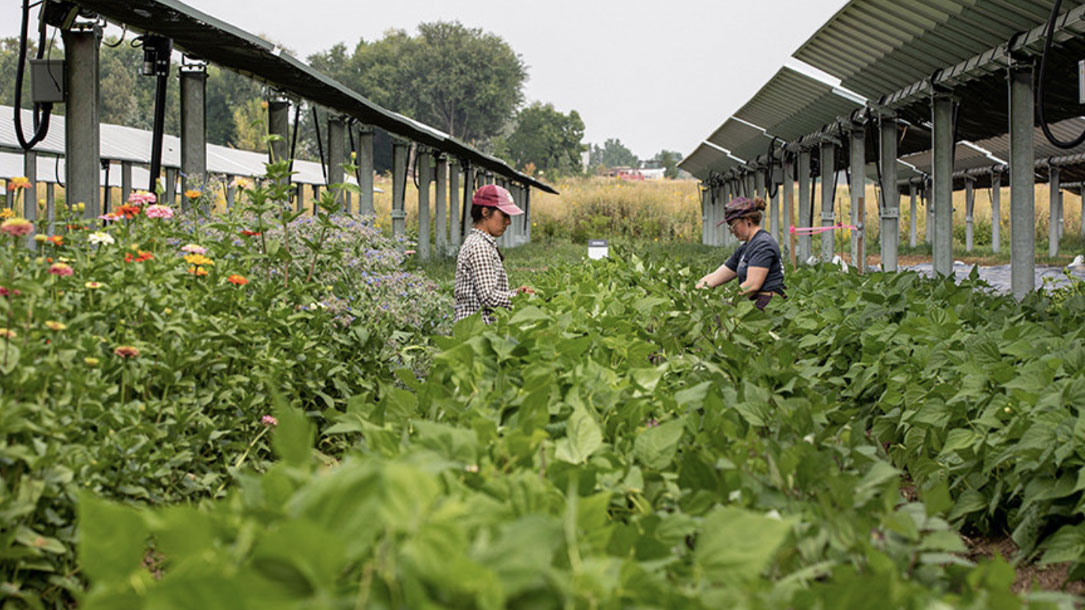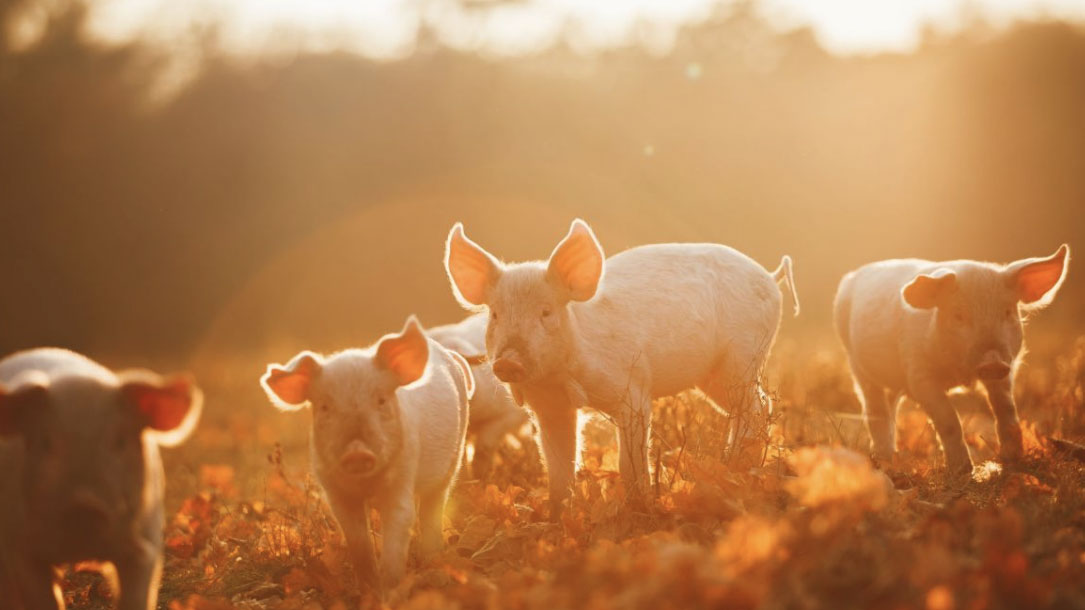Home > Climate News >

The future of farming?
Large solar arrays have begun to line the Wallkill Valley landscape. Solar farms are springing to life where agriculture — and in one case a miniature golf course — once ruled the land.
But what if a farmer wanted to continue to grow crops on a farm and was able to plant and grow them underneath solar panels that alternately allowed for shade and sunlight for the crops? What if the farmer could lease space to the provider of solar energy and earn additional income while continuing to operate the farm?
This concept, known as agrivoltaics, is catching on. It could soon come to the Town of Montgomery, provided a change in the town’s solar laws is approved…

Sustainable farm agrivoltaic project
Solar panels can be positioned to allow plants just the right amount of sunlight, and then the excess sunlight can be harvested for electricity — and produce more than they would without crops below them.
That’s right. Plants help keep the solar panels cool, which makes them more productive. Our studies have shown that panels positioned above plants produce up to 10% more electricity.
Agrivoltaics is a symbiotic relationship where both the solar panels and the crops benefit because they help each other perform better.

Cover crops not enough to improve soil after decades of continuous corn
Although about 20% of Illinois cropping systems are planted with continuous corn, it’s nearly impossible to find fields planted this way for decades at a time. Yet long-term experiments like one at the University of Illinois, including over 40 years of continuous corn under different nitrogen fertilizer rates, provide incredible learning opportunities and soil management lessons for researchers and farmers alike…

USDA offers expanded conservation program opportunities to support climate smart agriculture in 2022
The U.S. Department of Agriculture (USDA) Natural Resources Conservation Service (NRCS) is announcing several new and expanded opportunities for climate smart agriculture in 2022. Updates include nationwide availability of the Environmental Quality Incentives Program (EQIP) Conservation Incentive Contracts option, a new and streamlined EQIP Cover Crop Initiative, and added flexibilities for producers to easily re-enroll in the Conservation Stewardship Program (CSP).

A wild, windy spring is creating a soil erosion nightmare for farmers
Dust storms fueled by climate change, tillage, and drought are causing the loss of tons of topsoil throughout the Great Plains. Cover crop adoption, however, in most states hovers between 3 and 5 percent, says Webster. The USDA’s goal is to expand cover crops to 30 million acres by 2030, effectively doubling the amount in the ground currently.
Bukowski suggests farmers should adopt cover crops sooner rather than later, while it’s still an option. “At some point, we may not have enough precipitation for cover crops,” she says. “We do have a choice. Are we going to rise to the occasion in terms of climate, water resource management, and good farming practices — or are we not?” she asks…

Farming collaborative plan looks to keep land accessible, open
Under the land collaborative model, the property will not solely be devoted to agriculture; Sanford-Long’s animals will share land with a planned solar array…

Farms will harvest food and the sun, as Mass. pioneers ‘dual-use’ solar
Paul Knowlton owns 300 acres of land in Grafton, and farms about 50. The farm has been in his family for five generation, ever since Knowlton’s great-great-grandfather settled in the Blackstone Valley in 1872.
These days Knowlton grows pumpkins, squash and corn. Up a gravel road, past the family cemetery, corn stalks are still standing from this year’s crop. “Considering the drought situation, we did fair,” Knowlton says.

Solar meets sheep (and bees, and more)
Often solar panels sit on former agricultural land, but aren’t what we’d otherwise think of as a farm.
Agrivoltaics aims to change that by hosting PV panels and agriculture on the exact same land. Often, livestock like sheep graze under the solar panels. Sometimes the projects include pollinator habitat as well, which can benefit biodiversity, honey production, or adjacent pollinator-dependent crops. And trials are being done growing shaded crops under raised panels, too…

USDA to invest $1 billion in climate smart commodities, expanding markets, strengthening rural America
Agriculture Secretary Tom Vilsack announced today at Lincoln University that the U.S. Department of Agriculture is delivering on its promise to expand markets by investing $1 billion in partnerships to support America’s climate-smart farmers, ranchers and forest landowners. The new Partnerships for Climate-Smart Commodities opportunity will finance pilot projects that create market opportunities for U.S. agricultural and forestry products that use climate-smart practices and include innovative, cost-effective ways to measure and verify greenhouse gas benefits. USDA is now accepting project applications for fiscal year 2022.

A different kind of land management: let the cows stomp
Adam Isaacs stood surrounded by cattle in an old pasture that had been overgrazed for years. Now it was a jumble of weeds.
“Most people would want to get out here and start spraying it” with herbicides, he said. “My family used to do that. It doesn’t work.”
Instead, Mr. Isaacs, a fourth-generation rancher on this rolling land in the northeast corner of the Texas Panhandle, will put his animals to work on the pasture, using portable electrified fencing to confine them to a small area so that they can’t help but trample some of the weeds as they graze.












